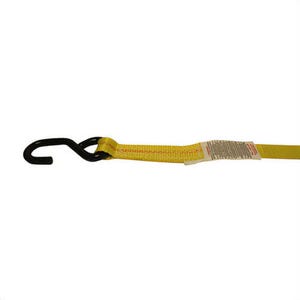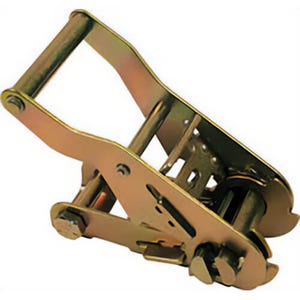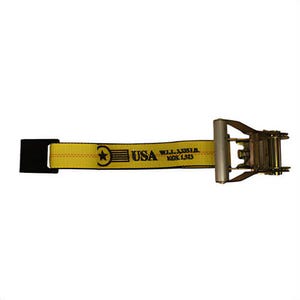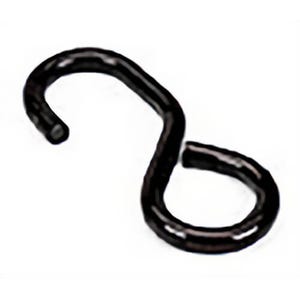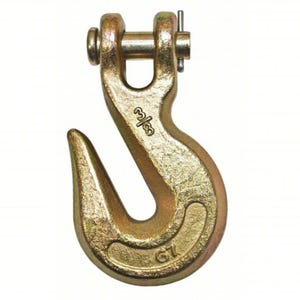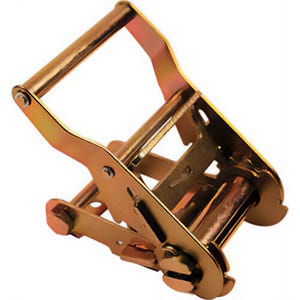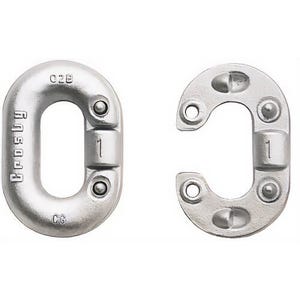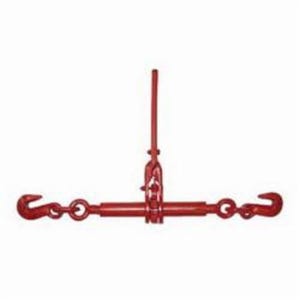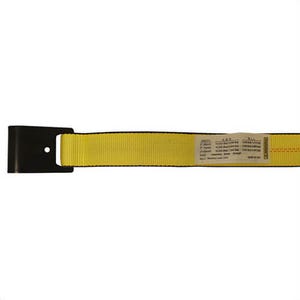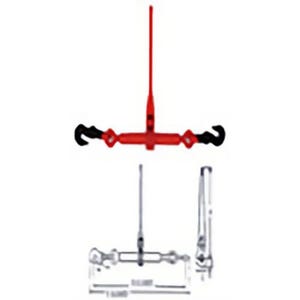When transporting cargo, load securement is essential — not optional. Each year, accidents happen because loads shift, straps break, or chains are not properly tensioned. Using the right equipment reduces these risks, ensuring the cargo arrives safely, operators stay protected, and businesses comply with DOT and FMCSA regulations.
At Empire Rigging, we provide everything from lightweight buckles for small, quick jobs to heavy-duty chains and binders built for the most demanding loads. Each piece of equipment has a specific purpose in securing loads, and understanding these purposes helps you choose the right gear for the job.
Buckles
Buckles are the simplest type of tie-down hardware, but don’t be fooled—they are essential for securing light to medium-duty cargo. Buckles are designed to grip webbing straps tightly and prevent slipping.
• Cam Buckles: Use a spring-loaded cam to secure webbing. These are ideal for lighter loads where over-tightening might cause damage, such as appliances, furniture, or recreational gear.
• Over-Center Buckles: Offer extra leverage, making them ideal for applications that need more tension. They act as a middle ground between cam buckles and full ratchet systems.
Because of their simplicity, buckles are quick to use, making them popular among delivery drivers, moving companies, and anyone in need of fast securement solutions.
Winches & Winch Bars
Winches are crucial for securing loads in the trucking industry. They are permanently mounted on trailers or used in portable setups, allowing operators to tighten straps swiftly and dependably.
• Winches are available in various configurations, including weld-on, bolt-on, sliding, and portable options. Weld-on winches are permanently mounted, while sliding winches move along the trailer track to adjust anchor points.
• Winch Bars: crucial for safe use, these provide the leverage needed to crank the winch and achieve maximum strap tension. Some models have a combination tip for use with both winches and load binders.
Winches excel in heavy freight roles where straps need to be pulled tight and held under constant pressure. They’re particularly favored in flatbed hauling, where versatility and strength are crucial.
Ratchet Straps
Ratchet straps are among the most popular tie-down systems because they offer versatility, strength, and ease of use. Their ratcheting mechanism enables operators to apply controlled tension without relying solely on muscle power.
• Variety of Widths: Straps range in size from 1 inch for light loads to 4 inches for industrial cargo.
• End Fittings: Options include flat hooks, wire hooks, snap hooks, chain ends, and e-track connectors, making ratchet straps versatile for nearly any hauling situation.
• High-Strength Webbing: Usually made from polyester, which resists UV rays, abrasion, and moisture, and maintains strength even in tough conditions.
Ratchet straps are used in many industries: securing pallets in logistics, fastening lumber in construction, or securing recreational vehicles during transport. Their adjustability makes them a popular choice for operators who need reliable tie-downs for various cargo types.
Rings
Rings serve as the anchor points that activate all other tie-down equipment. Without strong, reliable anchor points, even the best straps or chains can’t perform effectively.
• D-Rings: The most common type comes in weld-on or bolt-on versions. Weld-on D-rings are permanently attached to trailers, while bolt-on models can be removed or replaced.
• Recessed Rings: Installed flush with a surface, these are commonly used in enclosed trailers or van interiors to prevent trip hazards.
• Lashing Rings: Smaller options meant for lighter loads or situations where space is tight.
Rings are versatile, affordable, and durable. They are essential for customizing a secure setup and ensuring straps, hooks, or chains have a reliable contact point.
Hooks
Hooks act as the link between tie-down straps or chains and their anchor points. With different designs available, they can be matched to specific cargo and securement needs.
• Grab Hooks: Designed to “grab” a single chain link, allowing the operator to shorten or adjust chain length easily.
• Slip Hooks: Offer a looser fit, providing some flexibility when absolute rigidity isn’t needed, and are often used with safety latches for added security.
• Flat Hooks: Common on ratchet straps for flatbed trailers, designed to hook over rub rails.
• Wire Hooks: Their slim profile makes them ideal for fitting into narrow anchor points.
Hooks are constructed from high-strength steel, often with protective coatings to prevent corrosion. The right hook not only secures the load but also speeds up the tie-down process.
Chain
When maximum strength is required, chains are the top choice. They are designed to handle heavy loads, making them vital for heavy machinery, industrial equipment, and oversized cargo.
Grades of Chain
• Grade 70 (Transport Chain): Gold-chromate finish complies with DOT standards and is the preferred method for securing flatbed loads.
• Grade 80 and 100: Higher strength alloys are utilized in both lifting and securing applications where greater durability is necessary.
Working Load Limits
The transport chain is built for tough use, resisting wear from abrasion and harsh conditions. Operators should check chains regularly for stretched links, cracks, or corrosion to ensure safety.
The transport chain is built for tough use, resisting wear from abrasion and harsh conditions. Operators should check chains regularly for stretched links, cracks, or corrosion to ensure safety.
Load Binders
Load binders, commonly known as chain binders, are used to tighten and secure transport chains after they’re attached to cargo. They are available in two primary styles.
• Lever Binders: Easy to use and fast to tighten. A single pull secures the chain, but releasing the tension suddenly can cause recoil.
• Ratchet Binders: Safer and more controlled. The ratcheting mechanism requires more turns to tighten but enables steady application and release of tension, reducing the risk to the operator.
Choosing the right binder requires matching it to the size and grade of the chain used. Both types are common in trucking, construction, and heavy-haul applications where chain is the preferred tie-down method.
Matching Equipment to Your Application
No two loads are exactly the same, which is why having a variety of load securement tools is so important. For example:
• A flatbed truck hauling lumber might use 4" ratchet straps with flat hooks.
• A heavy-haul trailer transporting excavators will depend on Grade 70 chain and ratchet binders.
• A delivery van could secure pallets with cam buckle straps and recessed D-rings.
Always remember that the weakest part sets the system's limit. If a strap has a 5,000 lb WLL but the buckle is only rated for 3,000 lbs, then the entire system is limited to 3,000 lbs. Properly matching gear ensures safety and compliance.
Safety Best Practices
Even the most durable equipment can break if it's not used correctly. Building good safety habits helps protect cargo and operators.
• Inspect Before Each Use: Look for frayed webbing, cracked hooks, bent rings, or stretched chain links.
• Proper Tensioning: Apply enough tension to prevent the load from shifting, but avoid overtightening that could damage cargo or hardware.
• Release Safely: Keep clear when loosening binders or winches to prevent injury from recoil.
• Check During Transit: Loads may settle and shift in the first 50 miles; recheck and retighten the securement as needed.
Regular maintenance—such as lubricating ratchets and cleaning webbing—extends the life of your equipment and reduces replacement expenses.
Accessories & Protection
Accessories are often overlooked but can greatly enhance the effectiveness and longevity of securement equipment.
• Corner Protectors: Prevent straps from digging into sharp cargo edges, protecting both the load and the webbing.
• Protective Sleeves: Use straps or chains to prevent abrasion in high-friction areas.
• Storage Racks and Bags: keep straps organized and clean from dirt or oil between tasks.
• Lubricants: Designed for ratchets and binders to ensure smooth, reliable operation.
These add-ons justify their cost by lowering wear and minimizing downtime caused by damaged equipment.
Compliance Considerations
Federal and state regulations are strict about cargo securement, and for a good reason. Improperly secured loads can lead to fines, vehicle downtime, and dangerous accidents. DOT and FMCSA guidelines specify how many tie-downs are needed, the minimum Working Load Limits, and the acceptable securement methods depending on cargo type. By choosing properly rated gear and following inspection procedures, operators not only stay compliant but also protect their reputations and businesses.
When safety, compliance, and uptime are crucial, the right load securement gear makes all the difference. From quick-adjust buckles and ratchet straps to heavy-duty chains and load binders, Empire Rigging has the equipment—and the expertise—to match your cargo, route, and regulations.


